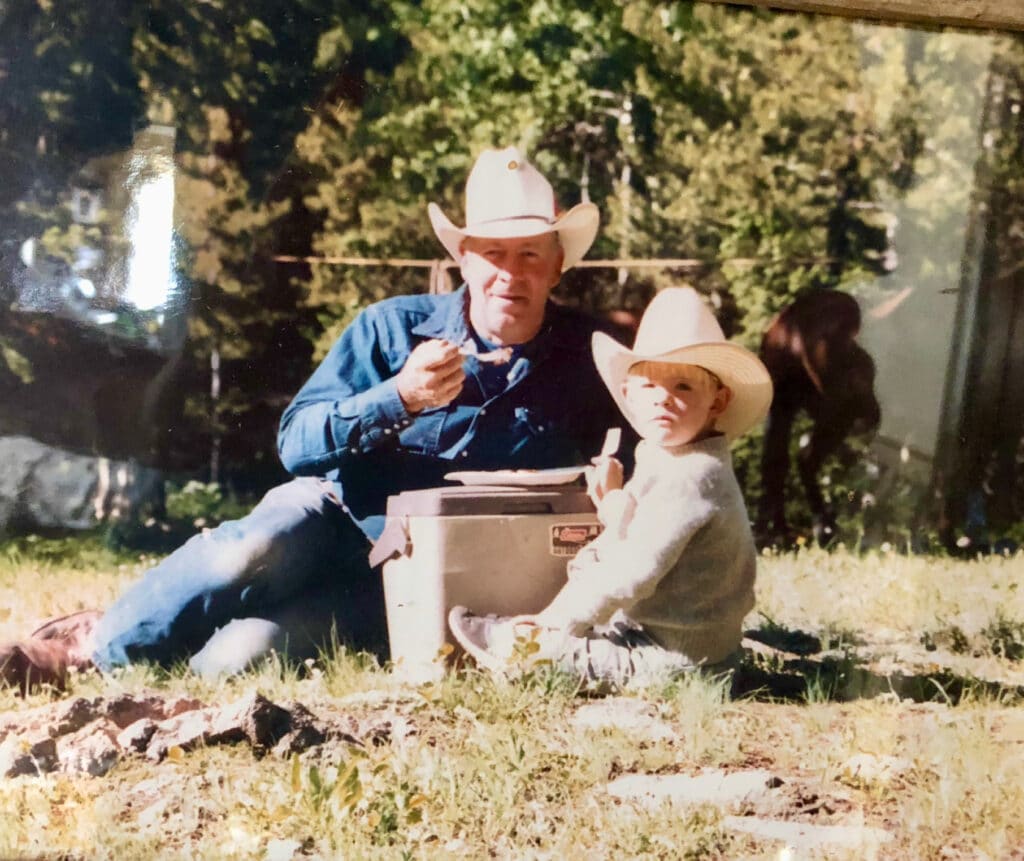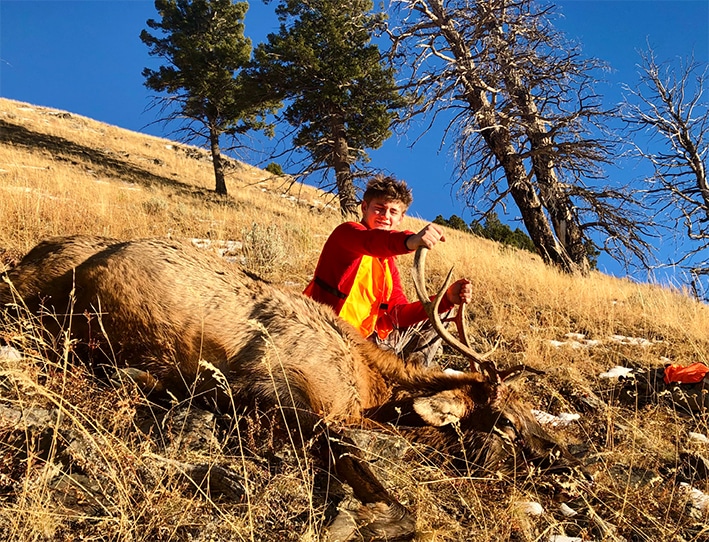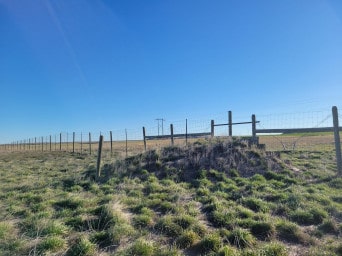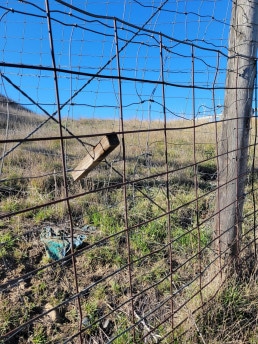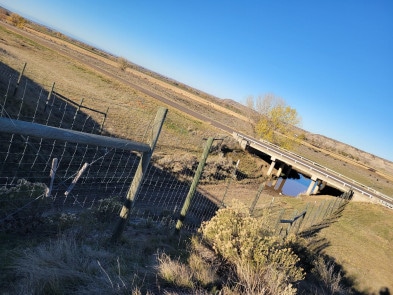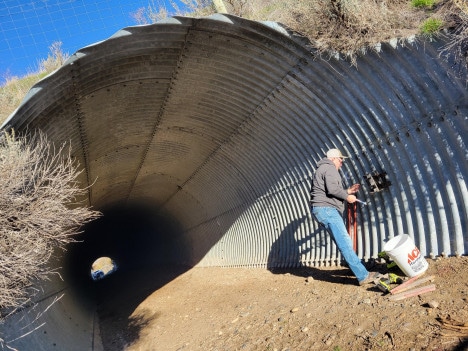
Group photo of the women who attended the First Annual Women’s Ice Fishing Clinic at Lake Mary Ronan; Photo taken by Sonya Smith/MWF.
When the world was still dark, 20 women, of all ages, gathered at Mountain Meadows near the shore of Lake Mary Ronan. It was cold, and everyone came bundled up and ready to be on the ice all day. Head lamps lit the early morning, new faces met one another, signed the required paperwork, learned about ice safety, shared their name and where they’re from, and then, all together, they headed out onto the frozen lake.
The event was organized and supported by Montana Wildlife Federation and Artemis Sportswomen with support from North 40 (Great Falls), Chancy and Dave’s Fish Camp (Kalispell), Snappy’s (Kalispell), Fish Wildlife and Parks and Wild Montana Anglers (Columbia Falls).

Stephanie Adams-Clemen and Morgan Marks caught a perch using an HT Striker Pro Ice Fishing Hook Set Up System; Photo taken by Sonya Smith/MWF.
Planning took a few months of meeting almost weekly between two avid ice fishers, Stephanie Adams-Clemen and Kimberly (Berly) McCoy, and staff from Montana Wildlife Federation, Morgan Marks, the North-Central and Eastern Montana Field Representative, and Sonya Smith, the Communications Director. Sonya is also the Co-Lead for Artemis Sportswomen in Montana. Morgan had connected with both ice fishers separately and when she realized some magic could come from these connections, she brought everyone together to discuss hosting an event.

Stephanie started ice fishing when she met her now-husband, an HT Enterprise Pro Staffer, 8 years ago and greatly enjoyed the sport during long cold winters living in Minnesota and Montana. She shared that, “the Women’s Ice Fishing Clinic is a dream opportunity to share my enthusiasm for fishing and build community with other women in a meaningful way.”
Berly learned to ice fish through an FWP Becoming an Outdoors Woman (BOW) class in 2019. Since then, she’s become an avid ice fisher, collecting more gear and feverishly anticipating the salmon bite each winter. “I had a ton of fun sharing my love of ice fishing with other women. Fingers crossed the Women’s Ice Fishing Clinic will become an annual tradition so we can continue to build a community of current and future women ice anglers,” Berly said. Both women were key stakeholders for this newly created, hopefully annual, women’s ice fishing event.
When the women hit the ice, the learning began. Some women had their own sleds, poles, and ice fishing gear, and others had never caught a fish before. The bravery it takes to show up, be willing to learn, and engage with other women cannot be understated. Both instructors got every woman set up with a pole and their own fishing hole in the ice and took turns sharing lessons, advice, and suggestions for how to fish for specific species, what gear was what, and what bait to use.

Berly McCoy demonstrating how to filet a fish on the ice; Photo taken by Sonya Smith/MWF.
There were smiles all around as women started jigging and the first fish was caught. “Woo woo” and “fish on” became familiar words spoken and yelled, as women celebrated each other when they caught a fish and cheered one another on.

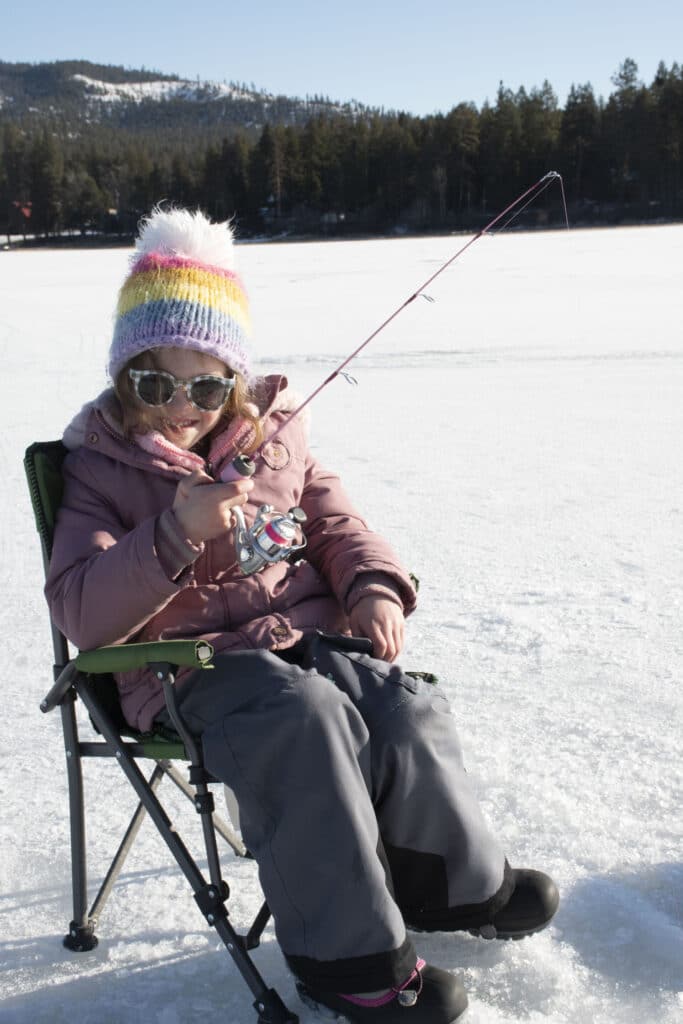
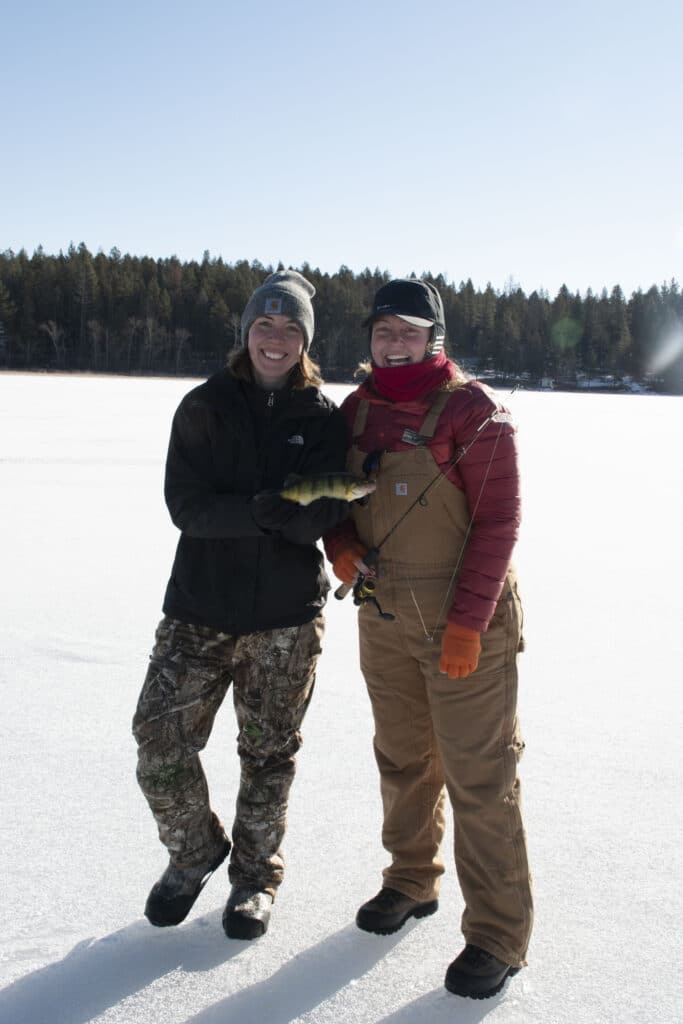
Photos of women ice fishing taken by Sonya Smith/MWF.
During lunch, Alex Stokman of Venery Montana, a women’s hunting and fishing company, spoke on behalf of Artemis Sportswomen as she’s an Ambassador for them, living and working in Montana.
Artemis Sportswomen, an initiative of the National Wildlife Federation, is a group of “bold, impassioned sportswomen who are out to change the face of conservation. The Greek goddess Artemis is the protector of the hunt and of nature. She is usually depicted with her trusty doe deer, a bow and arrows. She knew it as her duty to protect wildlife and the sanctity of the hunt. Artemis sees her as an extremely fitting icon to represent our philosophy. We embody Artemis’ wild spirit and protective nature to boldly carry the conservation torch for the modern sportswoman by engaging in every facet of the sporting conservation life.” We’re grateful for Artemis’ support and for sending a representative to enjoy the day, engage with the women, and share more about the organization’s work in the conservation space.
Mountain Meadows Restaurant offered a special lunch menu for the event and our thanks abound for their hospitality and kindness. It was an overall, informative and beautiful day out on the ice!

Alex Stokman of Venery Montana speaking to the group during lunch; Photo taken by an attendee of the event; Credited to MWF.

Beautiful day on the ice; Photo taken by Morgan Marks/MWF.

